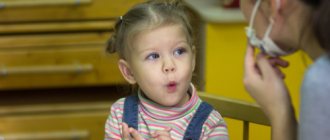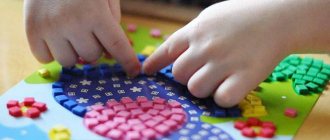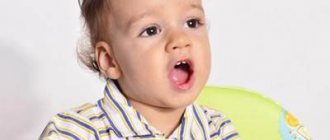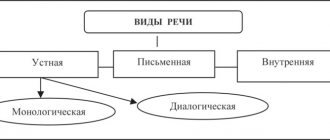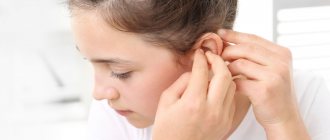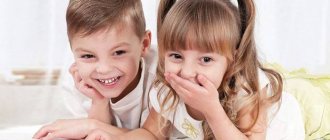Parents, and often teachers, underestimate the need to develop gross motor skills in children. And it is the basis for the formation of fine motor skills, which is important when preparing for school. Let's figure out what gross motor skills are, why and how to develop them.
What are gross motor skills?
Gross motor skills, or general, are active movements of the body that involve the arms, legs, torso, and head. In fact, adults use these skills without thinking, but children have to gradually master them.
During the first year of life, the baby develops rapidly and learns to control his body:
- focuses the gaze;
- holds head;
- controls arms and legs;
- learns to sit;
- crawls;
- tries to get up;
- walks, runs, jumps.
The health and life of the child depends on how successfully all these important processes take place.
- By the age of 2, a child masters complex gross motor skills of the arms and legs. The baby throws and kicks objects. Holding his hand, he climbs the stairs.
- Children at 3 years old learn to walk, run, and jump more confidently.
The formation of gross motor skills occurs through any movements: active games, copying the actions of adults and animals, sports activities, dancing, aerobics.
It is important to start working with your child as early as possible. Good physical development of a preschooler is the key to his future success in school and life and the opportunity to avoid many problems.
Fun exercises for babies
This is my toy!
An activity option for a child who already knows how to grab and hold objects. When the baby is lying in the crib, put a soft rattle in his hands and gently, weakly pull it towards you. Let the baby try to pull the toy towards him. This exercise allows you to train your biceps, which are responsible for bending your arms at the elbow and turning your hands.
Expedition for children's treasures
Place your baby's favorite toys around the room or playpen and give him freedom of movement: let him try to crawl to his favorite bunnies, blocks and pyramids. This will awaken the child's interest in independent movements.
Multi-colored leaves
The exercise is suitable for babies who are already making their first attempts to stand on their feet, holding onto the sides of the crib. Glue several colored stickers on the wall next to the crib - they should be inaccessible from a sitting position. But it should be easy for the baby to get them by standing on his feet. Your little one will surely enjoy tearing leaves off the wall. Do not leave your child with stickers unattended.
Why develop
Without developed gross motor skills, the full formation of a person is impossible. Benefits of developing motor skills:
- strengthen the musculoskeletal system;
- improve coordination;
- provide protein synthesis in muscles;
- stimulate cognitive activity;
- increase performance;
- develop independence;
- improve speech;
- help develop reading and writing skills;
- motivate to be active;
- form interhemispheric interaction;
- develop creative potential;
- promote successful socialization;
- learn to control your body in space;
- contribute to understanding the world and oneself.
As you can see, the value of developing gross motor skills is great. This work allows us to preserve and increase the physical and mental development of children.
Difficulties of a child with gross motor deficits
Each baby is individual and develops unevenly. It is better not to compare your child with other children. One child may begin to walk at 9 months, and another after a year. This is fine. The main thing is to exercise regularly with your baby. However, there are criteria by which it can be determined that a child has poorly developed gross motor skills:
- Drawing and writing skills are difficult;
- inability to dress independently and use cutlery;
- inability to maintain a sitting posture;
- loses orientation in space: falls, stumbles, crashes;
- lethargy;
- speaks poorly;
- cannot play with small toys;
- poorly switches to new activities;
- low self-esteem;
- finds it difficult to communicate with peers.
If you suspect a gross motor disorder, see your doctor for correction.
Age-related features of the development of fine motor skills of the hands
Arkhipova E.F. Doctor of Pedagogical Sciences, Professor at Moscow State Pedagogical University, Moscow.
Age-related features of the development of fine motor skills of the hands and hand-eye coordination of a child from birth have been studied and described.
After the baby , up to two to three months, the baby's hands can be clenched into a fist, but the thumb should normally be on top, and not inside the fist.
Then, after three months, the fists “open” and the child’s straightened hands begin to pat around themselves, grabbing what adults put into the child’s hands. Then the child's hand begins to reach out to what the eyes see.
After five months, the baby develops a “pincer grip,” where the thumb and index finger stand out. The child's two fingers are parallel, and then the child begins to reach out and grab small objects. Reaches for strings and pays attention to small objects.
Between three and six months , the baby actively moves his hands toward his mouth. Monitors hand movements. Under visual control, he directs his hand towards an object and grasps it.
After six months, the baby develops a “pinching grip.” The child’s fingers, thumb and index, are not connected in parallel, but in a rounded manner. And then there comes a period when the child trains in a pinch grip.
By ten months , the child should develop the “pointing gesture,” but this gesture and the separation of the index finger separately must be taught to the child. A “single” field of vision and action develops. The child's eyes guide the movement of the hand. Children transfer an object from one hand to another, they can put a spoon in a cup, cubes in a box.
There is scientific research data that predicts that if a child has gone through such a path in the development of fine motor skills of the hand until the end of the first year of life, then the brain structures all develop according to ontogenesis, that is, according to the norm.
Both hands of a child under two years of age work equally. Only towards the end of the second year of life does the leading hand begin to be determined.
In the period from one to two years, the child can draw strokes and “doodles”, can hold a cup well, lift it and drink independently. Correlates and places the square in the square slot, and lowers the oval into the oval hole. Can repeat images of several horizontal, vertical and rounded lines. Can hold two objects in one hand at once, draw with a pencil, turn the pages of a book, stack from two to six cubes on top of each other.
Between two and three years of age, a child can turn on musical toys, turn a phone dial with his finger, draw lines, reproduce simple shapes, cut with a plastic knife, and draw a cross according to a pattern. They open drawers and boxes with great interest and tip over their contents. They love to play with sand and clay. They can open screw caps, try using scissors, paint with their fingers, string beads and others.
In the period from three to four years, a child can trace along contours and copy some geometric shapes. Dexterity in the hands appears and the child can grab a ball rolling towards him. The child should hold the pencil correctly with three fingers, and not with a palm grip. He tries to copy shapes with several features and assemble buildings from nine cubes. Can draw not only with pencils, but also with colored crayons. The child can fold a square piece of paper more than once.
Between four and five years of age, a child can color simple shapes, copy capital block letters, and draw a person, depicting two to three parts of his body. Tries to copy square, star and other shapes. A complex cortical brain function “stereognosis” is formed and the child can identify objects by shape, size, texture in the bag by touch, without visual control. The child shows interest in modeling from plasticine and completes tasks according to the model. Masters self-care skills: buttons and unbuttons buttons, opens and closes zippers, unties a scarf, laces shoes, etc. All this is possible only with the correct development of fine motor skills of the fingers.
Between the ages of five and six, a child can carefully cut out pictures and write letters and numbers. Willingly adds missing details to the picture. Can deftly hit a nail with a hammer. Can easily reproduce geometric shapes based on a model.
The age of six to seven years is a sensitive period for the development of fine hand movements necessary for mastering grapho-motor skills for writing. At this age, by organizing various types of activities and systematically using training exercises, you can achieve good results in the development of hand motor skills, form grapho-motor skills and prepare the hand for writing at school.
Features of fine motor skills of children with speech disorders
Research results by N.S. Zhukova, M.M. Koltsova, E.M. Mastyukova, T.B. Filicheva confirms that training fine movements of the fingers stimulates speech development.
Children with speech impairments rarely have confident coordination of finger movements. As a rule, they experience motor clumsiness, imprecision of movements, difficulties in mastering the motor program and switching, and synkinesis (cooperative movements of other parts of the body).
Back in the middle of the last century, it was found that the level of development of children’s speech directly depends on the formation of fine movements of the fingers. If the development of movements corresponds to age, then speech development is within normal limits. If the development of finger movements lags behind, then speech development is delayed or distorted.
Research conducted by M.M. Koltsova, proved that finger movements stimulate the development of the central nervous system and accelerate the development of a child’s speech. Her research confirmed that about a third of the total area of the motor projection of the brain is occupied by the projection of the hand, which is located next to the projection of the speech motor area. And systematic work on the movements of the fingers really stimulates the maturation of the central nervous system, which manifests itself, in particular, in accelerating the development of the child’s speech.
Thus, finger gymnastics stimulates the areas of the cerebral cortex responsible for fine motor skills and speech.
This provision explains the recommendations of scientists to include in the preschool education system activities aimed at developing fine motor skills of the fingers.
Children with speech disorders acquire self-care skills late and with difficulty. Most children cannot button a button, untie a scarf, or perform other self-care tasks.
During drawing classes, they don’t hold a pencil well and their hands are tense. Many children don't like to draw. Motor clumsiness of the hands is especially noticeable during applique classes and with plasticine.
In works on appliqué, difficulties in the spatial arrangement of elements can also be traced. Violation of fine differentiated movements in the fingers is manifested when performing sample tests of finger gymnastics.
Children find it difficult or simply cannot perform an imitation movement without outside help, for example, “lock” - put their hands together, intertwining their fingers; “rings” - alternately connect the index, middle, ring and little fingers with the thumb and other finger gymnastics exercises.
During origami classes they experience enormous difficulties and cannot perform the simplest movements, since both spatial orientation and subtle differentiated movements of the fingers are required. Many children under five or six years old are not interested in playing with small construction sets, do not know how to play with small toys, and do not assemble puzzles.
Children of older preschool age have difficulties in mastering graphic skills. Some children exhibit “mirror writing of letters.” Many children do not have a finger grip on a pencil or pen. Children still have a tendency to palmally grasp a pencil.
Most children of senior preschool age experience general tension in their fingers and hands when drawing. Because of such tension, the child quickly gets tired, and the lines reflecting this tension become uneven and wavy. The more the child tries, the more the tremor-shaking of the hand will be reflected on the paper.
Many studies confirm that the level of speech development is always directly dependent on the degree of development of fine movements of the fingers.
The famous teacher V.A. Sukhomlinsky argued that “the child’s mind is at his fingertips,” therefore improving children’s fine motor skills contributes to the development of their speech and intelligence.
Aristotle called the hands “The hand is the tool of all tools.” Kant called the hands: “The hand is a kind of external brain.”
The English psychologist D. Selley also attached great importance to the “creative work of hands” for the development of children’s thinking and speech.
Currently, modern scientists have established that the level of development of children's speech is directly dependent on the degree of formation of fine movements of the fingers, and the improvement of speech directly depends on the degree of hand training.
Famous neurologist and psychiatrist V.M. Bekhterev wrote that the function of hand movement is always closely related to the function of speech, and the development of the first contributes to the development of the second.
Even the research of physiologist I.P. Pavlov. showed that speech is, first of all, muscle sensations that come from the speech organs and from finger movements to the cerebral cortex.
If you look at a medical atlas and find a “map” of the brain there, you can see that the motor speech area is located very close to the motor area of the hand. The size of the projection zone of the hand and its proximity to the motor speech zone have led many scientists to believe that training fine movements of the fingers will have a great impact on the development of a child’s active speech.
Interesting observations are noted by researchers studying the motor development of children. If a child is asked to make precise movements, he immediately begins to get tired, distracted and tends to evade the task. The inability to achieve accuracy depends on the underdevelopment of cortical mechanisms and on the lack of development of “formulas” of movement, that is, due to lack of training. The child’s apparent motor activity and tirelessness is associated with the fact that he does not make productive working movements that require precision and, consequently, a large expenditure of energy.
Fine motor skills require coordinated motor activity of the small muscles of the hand and eye. It must be mastered gradually. Fine motor skills help a child explore, compare, and classify the things around him and thereby allow him to better understand the world in which he lives. Fine motor skills help a child take care of himself independently, express himself through play and plastic arts, and provide the opportunity to gain social experience.
A number of studies pay much attention to the question of whether the development of a child’s motor skills is a consequence of the natural maturation of the corresponding structures or is it the result of learning.
The conclusions drawn indicate that both natural maturation and learning are equally significant for the formation of a child’s motor skills. This is especially true for finger motor skills.
Research shows that imitation plays an important role in mastering hand movements. There are three types of imitative reactions: repetition of one’s own movements; repetition of familiar adult movements; repetition of new movements.
According to L. S. Vygotsky, drawing “is a kind of graphic speech, a graphic story about something.” Special studies have shown that there is a kind of critical moment when simple pencil scribbling and meaningless scribbles begin to mean something.
How to develop
The main tasks of developing gross motor skills are:
- creating conditions for the implementation of the child’s motor activity;
- developing skills to control and manage movements;
- teaching coordination of actions;
- development of motor activity.
Based on the tasks, parents need to arrange the space in the room, stock up on the necessary equipment and control the process. There should be enough space in the room for running, jumping, and bending. Start with the simplest thing: teach your baby to do morning exercises. If it is possible to spend it outside, even better. Simple exercises are quite enough: squatting, walking, turning, bending.
Buy various equipment for outdoor games: balls, jump ropes, hoop. At home, you can play bowls, basketball, gorodki, and dodgeball with your child. The ideal option would be to arrange a special sports corner in the room. If this is not available, you can simply dance to your favorite music, alternating slow and fast movements.
For walks on the street, stock up on a bicycle, scooter, roller skates and other age-appropriate equipment. In winter - skates, skis, slides. In addition, to develop your child’s physical activity, you can enroll in the nearest children’s center or sports section, where ideal conditions have been created for full development.
Household chores also contribute to the development of gross motor skills. The child should be loaded with feasible chores around the house. For example, sweep the floor, wipe the table, arrange toys, hang or fold laundry.
Fine motor skills in children aged 1 year
Congratulations! Your baby is one year old! At this age, the child’s development is progressing by leaps and bounds, and he can already do a lot of things. Parents are usually impressed by gross motor skills, particularly the long-awaited first steps, but there is also something to be surprised about in the area of fine motor skills. Thanks to improved gross motor skills, the child is increasingly eager to explore the world around him. In the process, fine motor skills are also improved. The baby still cannot grasp the smallest objects, but this achievement is not far off. While your child enjoys exploring and playing with larger objects, such as wooden blocks and wooden puzzles. At this stage, significant progress occurs in the development of hand-eye coordination. Nowadays, the child increasingly uses one hand, but this does not mean that his leading hand has already been determined (that is, he will be left-handed or right-handed).
How to develop hand motor skills in a child aged 1 year
As your child gets older, you can do the following exercises to develop hand motor skills:
- Show your child how to fold paper. You can make an accordion fan or a paper airplane with it.
- Have your child insert different shaped blocks or pegs (square, rectangular, triangular) into the corresponding holes.
- Show him how to stack the blocks on top of each other to make a tower.
- Offer him toys that can be taken apart and put together safely, such as a set of cups that nest inside each other.
- Invite him to sculpt something from plasticine.
- Entrust him with simple housework, such as sweeping, arranging items, or helping you prepare food (stirring pancake batter or putting vegetables in a pan).
- Play together outside, for example, you can throw a ball to each other.
Summarize
| Between the ages of 1 and 2 years, a child develops the following skills and abilities: ● He can build a tower from blocks and immediately break it. ● He plays with boxes, containers and their lids. ● He can lift a moving object, such as a ball. ● He leafs through books. ● He turns the door handles. ● It knows how to insert pins into the corresponding holes. ● He draws with pencils or fingers. ● He knows how to drink from a mug. ● He can feed himself with a spoon (with varying degrees of success). |
Games and exercises to develop gross motor skills
There are a great many exercises and games for the development of speech and gross motor skills. These could be classes to strengthen the muscle corset, coordination to create spatial concepts in preschool children. Games are played in pairs or groups.
- "Boat". Lying on your back with arms outstretched. The child needs to simultaneously raise his straight arms, head and legs. Hold the pose for as long as possible. This same exercise can be done while lying on your stomach.
- "Log." Starting position as in the previous exercise. Roll your entire body alternately to the right and left.
- Lying on your stomach, put your hands behind your head. Spread your elbows to the sides. Slowly raise your upper body while keeping your legs straight.
- "Spider." Squat down, rest your palms behind you. Crawling imitating an insect.
- "Goose step" Squatting position, only hands on knees. Walk in different directions: forward, backward, left, right. You can make the exercise more difficult by placing a flat object on your head.
- "Narrow path" Lay out a long rope with twists and turns on the floor. Invite the child to walk along it. You can roll cars and other toys along an imaginary path.
- Stand alternately on your right and left legs, on your toes, on your heels. Make a “swallow”.
- March in place with your legs raised high.
- Exercises with cross movements of arms and legs.
- "Hit the target." The game develops the eye well. You can purchase a traditional ring thrower or build it yourself from scrap material. Any container where you need to throw objects at a distance will do. This also includes options for games of bowling, small towns, and skittles.
- Ball games or fitball exercises.
Also find out what exercises there are to develop fine motor skills in children.
Fine motor skills
Fine motor skills are the movements of the hand and fingers. It requires focus, attention and precision. For example, writing, drawing, carving, modeling clay, tying shoes, opening doors with keys, grabbing objects, sewing, fastening buttons, braiding hair, working on a computer using a mouse or touch screen.
(c)freepik.com
Conclusion
Gross motor skills are the motor skills a child needs for full physical and mental development. Abilities are formed from an early age through simple exercises, housework, outdoor games and active sports activities.
At the Baby Club child development centers, we pay attention to both gross and fine motor skills. We use only proven, popular development methods. Our specialists will be happy to prepare your child for kindergarten or school and help him develop as a person.
